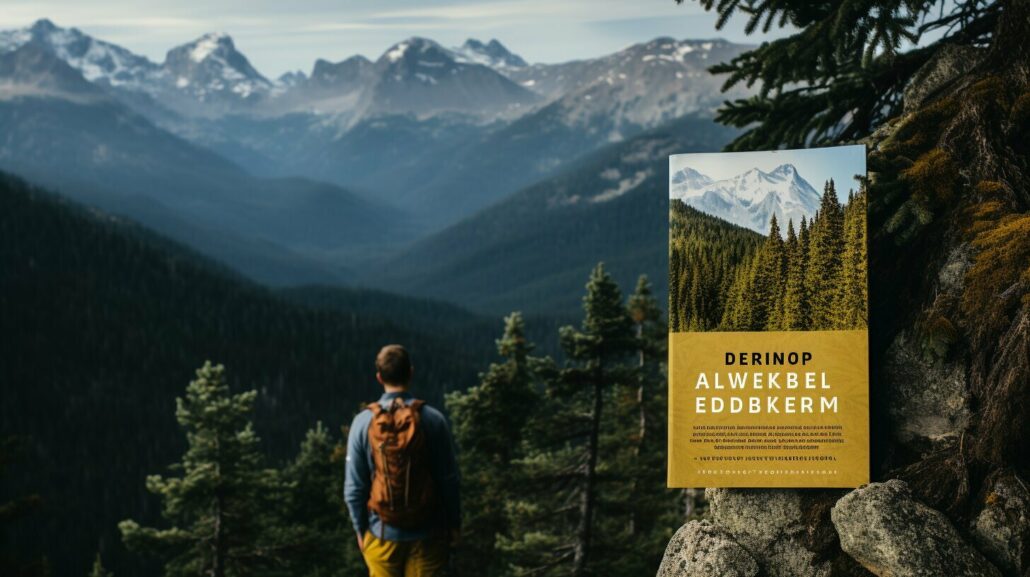Are you ready to venture into the wilderness and master the art of survival? Wilderness Survival 101 is your ultimate guide to navigating nature’s challenges with confidence and skill. From wilderness survival techniques to essential survival skills, this comprehensive guide will equip you with the knowledge and practical know-how to thrive in the great outdoors.
Key Takeaways:
- Developing the right mindset is crucial for wilderness survival.
- Acquiring knowledge through reading and practical experience is essential.
- Building a shelter provides protection and rest in extreme conditions.
- Fire is a key element for warmth, cooking, and signaling for help.
- Finding and purifying water is vital for survival.
The Mental Aspect of Survival
The first step to becoming a skilled wilderness survivor is cultivating a resilient mindset that will guide you through any challenge nature throws your way. Survival skills, wilderness safety tips, and emergency preparedness are essential, but without the right mental attitude, even the most knowledgeable individual may struggle to survive in the wild.
When faced with a survival situation, it’s crucial to have the will to survive. This inner drive will push you forward and motivate you to overcome obstacles. Maintaining a positive mindset is also vital, as it allows you to stay focused and optimistic, even in the face of adversity. By adopting the right mental approach, you can stay calm, make sound decisions, and adapt to changing circumstances.
Remember, survival is not just about physical strength; it’s about mental fortitude. As the saying goes, “The will to survive is the strongest weapon in your arsenal.”
The Power of Knowledge in Wilderness Survival
In addition to mental preparation, acquiring knowledge is a crucial aspect of wilderness survival. Survival skills, wilderness survival techniques, and essential knowledge can make all the difference when it comes to thriving in nature.
Reading books on bushcraft and wilderness survival can provide valuable insights into the skills and techniques necessary for survival. Some recommended titles include “Bushcraft 101: A Field Guide to the Art of Wilderness Survival,” “The Bushcraft Field Guide to Trapping, Gathering, and Cooking in the Wild,” and “The Ultimate Bushcraft Survival Manual.”
However, knowledge is not limited to reading alone. Practical experience and hands-on training are vital for honing your skills. By immersing yourself in the wilderness and practicing survival techniques, you can develop the practical know-how needed for thriving in nature’s untamed realm.
| Skills | Books |
|---|---|
| Shelter building | Bushcraft 101: A Field Guide to the Art of Wilderness Survival |
| Fire starting | The Bushcraft Field Guide to Trapping, Gathering, and Cooking in the Wild |
| Navigation | The Ultimate Bushcraft Survival Manual |
The Power of Knowledge in Wilderness Survival
Equipping yourself with knowledge is like having a secret weapon in the wild. Discover the crucial survival techniques and essential skills that will keep you safe and thriving in the great outdoors.
When it comes to surviving in the wilderness, knowledge truly is power. By acquiring the right information and skills, you can navigate through challenging situations and overcome unexpected obstacles. By reading books, gaining practical experience, and learning essential techniques, you can enhance your chances of survival and thrive in the wild.
One of the best resources for wilderness survival knowledge is bushcraft books. These books offer a wealth of information on various survival skills, techniques, and essential knowledge. Whether you’re a beginner or an experienced outdoor enthusiast, these books can enhance your wilderness survival training and provide you with valuable insights.
Recommended Bushcraft Books:
| Book Title | Author |
|---|---|
| Bushcraft 101: A Field Guide to the Art of Wilderness Survival | Dave Canterbury |
| The Bushcraft Field Guide to Trapping, Gathering, and Cooking in the Wild | Dave Canterbury |
| The Ultimate Bushcraft Survival Manual | Tim MacWelch |
These recommended titles cover a wide range of topics, including shelter building, fire starting, foraging, hunting, first aid, and navigation. They are excellent resources for anyone looking to deepen their understanding of wilderness survival techniques and acquire essential skills.
Remember, knowledge is your greatest asset in the wild. By equipping yourself with the right information and skills, you can confidently tackle any wilderness survival situation that comes your way.
Building a Shelter: Protection and Rest
When the wilderness becomes your home, a well-built shelter becomes your sanctuary. Explore the art of shelter-building and discover the essential gear needed to create a secure and comfortable basecamp.
Building a shelter is a critical skill in wilderness survival. It provides protection against extreme weather conditions, wildlife threats, and offers a safe space for rest and recovery. Whether you are stranded in the wilderness or embarking on a camping adventure, knowing how to construct a sturdy shelter is essential for your well-being.
There are various techniques for building a shelter, each suitable for different environments and materials available. The choice of shelter will depend on factors such as terrain, climate, and available resources. Some common shelter types include lean-to, debris hut, and tarp shelters.
Types of Shelters:
| SHELTER TYPE | DESCRIPTION |
|---|---|
| Lean-to | A simple and quick shelter made by leaning a large branch or tree trunk against a sturdy support. |
| Debris Hut | A shelter created by constructing a framework of branches and covering it with leaves, grass, or other debris. |
| Tarp Shelter | A lightweight and versatile shelter using a tarp or poncho as the primary material. |
To build an effective shelter, you will need certain essential gear:
- Tarp or poncho: A waterproof and lightweight material that can serve as the main shelter cover.
- Rope or paracord: Essential for securing the shelter and creating structural support.
- Knife or multitool: Used for cutting branches, ropes, and other materials needed for shelter construction.
- Ground insulation: A sleeping pad or insulating material to provide comfort and insulation from the cold ground.
- Fire-starting tools: Matches, lighter, or firestarter to provide warmth and cook food inside the shelter.
Remember to choose a suitable location for your shelter, considering factors such as drainage, wind direction, and proximity to resources. Practice building different types of shelters in various environments to enhance your skills and adaptability. A well-built shelter will not only provide physical protection but also offer a sense of security and peace of mind in the wilderness.
Complete Table:
| SHELTER TYPE | DESCRIPTION |
|---|---|
| Lean-to | A simple and quick shelter made by leaning a large branch or tree trunk against a sturdy support. |
| Debris Hut | A shelter created by constructing a framework of branches and covering it with leaves, grass, or other debris. |
| Tarp Shelter | A lightweight and versatile shelter using a tarp or poncho as the primary material. |
Fire: The Key to Survival
Fire has been mankind’s companion in the wild for centuries. Discover the secrets of fire-making and unlock its invaluable benefits for survival in the wilderness.
When it comes to wilderness survival techniques, fire is at the top of the list. It provides warmth, a means of cooking food, and the ability to signal for help. Learning how to start and maintain a fire is essential for thriving in the wild.
There are various techniques for starting a fire in the wilderness, from using friction methods like the bow drill or hand drill to utilizing fire starters and flint and steel. Each method requires practice and skill, but once mastered, it becomes a reliable tool in your survival arsenal.
| Benefits of Fire in Wilderness Survival |
|---|
| 1. Warmth: Fire provides much-needed warmth in cold environments, preventing hypothermia and keeping you comfortable. |
| 2. Cooking: With fire, you can cook food, making it safe to eat and providing essential nutrients for your survival. |
| 3. Signaling: Fire can be used as a visual signal to attract attention and increase the chances of being rescued. |
| 4. Mental Well-being: Fire has a soothing effect on the mind, offering a sense of security and comfort during challenging times. |
Remember, safety is paramount when dealing with fire in the wilderness. Always ensure you have a safe area to build your fire and keep it under control. Prioritize putting out the fire completely before leaving your campsite to prevent accidental wildfires.
Finding and Purifying Water
In the wild, water is your lifeline. Learn how to navigate nature’s water sources, and master the art of purifying this vital resource to sustain yourself during your wilderness adventures.
When searching for water in the wilderness, it’s important to know where to look. Keep an eye out for signs such as lush vegetation, animal tracks, or low-lying areas where water may collect. Natural sources like rivers, streams, and lakes are usually the safest options, but if you’re in a dry region, you may need to get creative. Look for hidden water pockets, such as rock crevices or depressions in the ground, which can hold precious water.
| Purifying Techniques | Pros | Cons |
|---|---|---|
| Boiling | – Kills most bacteria and viruses – Requires only a heat source | – Time-consuming – Doesn’t remove chemical contaminants |
| Water Filter | – Filters out bacteria and protozoa – Convenient and reusable | – Doesn’t eliminate viruses – Can clog or break |
| Chemical Treatment | – Kills a wide range of pathogens – Lightweight and portable | – Takes time to work – May leave an aftertaste |
To ensure the water you find is safe for consumption, it’s essential to purify it. There are several techniques you can use, each with its own advantages and limitations. Boiling water is a reliable method that kills most bacteria and viruses, but it can be time-consuming. Water filters are convenient and effective in removing bacteria and protozoa, but they may not eliminate viruses. Chemical treatments, such as chlorine or iodine tablets, are lightweight and portable, but they require time to work and may leave an aftertaste.
Remember:
- Always assume that water from natural sources is contaminated and take proper precautions.
- Avoid drinking water from stagnant ponds or swamps, as they are more likely to contain harmful pathogens.
- Carry multiple purification methods in case one fails or becomes unavailable.
- Keep an emergency water supply, such as water purification tablets, in your survival kit.
By mastering the art of finding and purifying water, you’ll increase your chances of staying hydrated and healthy during your wilderness adventures. Remember, water is essential for survival, so make it a top priority in your wilderness survival skills toolkit.
The Power of Bushcraft Books
Expand your wilderness survival knowledge with the wisdom shared in renowned bushcraft books. Discover the must-read titles that will equip you with invaluable skills and insights for thriving in the wild.
Bushcraft books offer a wealth of information on survival skills, techniques, and essential knowledge. These books provide a comprehensive guide to mastering the great outdoors and navigating the challenges of wilderness survival. From learning to build a shelter to finding and purifying water sources, these books cover a range of essential skills that can mean the difference between life and death in a survival situation.
Whether you’re a beginner looking to enhance your wilderness survival training or an experienced adventurer seeking to further hone your skills, there’s a bushcraft book out there for you. These books provide step-by-step instructions, detailed illustrations, and expert advice to help you develop the necessary survival skills and knowledge for any wilderness scenario.
Recommended Bushcraft Books:
| Title | Author |
|---|---|
| Bushcraft 101: A Field Guide to the Art of Wilderness Survival | Dave Canterbury |
| The Bushcraft Field Guide to Trapping, Gathering, and Cooking in the Wild | Dave Canterbury |
| The Ultimate Bushcraft Survival Manual | Tim MacWelch |
These recommended bushcraft books are highly regarded within the survival community and have received rave reviews from readers. Each book offers unique perspectives and insights, covering topics such as fire-making techniques, foraging for wild edibles, building primitive tools, and much more. By immersing yourself in the knowledge shared in these books, you’ll gain the confidence and skills needed to thrive in the wild.
Wilderness Survival Gear: Essentials for the Wild
Just as a warrior equips themselves before battle, a wilderness survivor must be armed with the right gear. Explore the essential tools and equipment you should never venture into the wild without.
1. Knife: A high-quality, versatile knife is a must-have in any wilderness survival kit. It can be used for various purposes such as cutting rope, preparing food, building a shelter, and even self-defense.
2. Tarp or Shelter: A lightweight, waterproof tarp or tent is crucial for providing protection against the elements. It offers a safe space to rest, protects against rain and wind, and can be used to create a makeshift shelter if needed.
3. Fire Starter: Fire is essential for warmth, cooking, and signaling for help. Carry a reliable fire starter, such as waterproof matches or a fire striker, to ensure you can start a fire even in challenging conditions.
| Item | Function |
|---|---|
| Water Filter or Purification Tablets: | Ensures access to clean drinking water by filtering out harmful bacteria and protozoa or using chemical tablets to purify water sources. |
| Compass and Map: | These navigation tools are essential for finding your way in the wilderness and preventing getting lost. |
| First Aid Kit: | Accidents and injuries can happen, so having a well-stocked first aid kit is crucial. Include items such as bandages, antiseptic wipes, and pain relievers. |
Remember, the gear you choose should be lightweight, durable, and tailored to your specific needs and the environment you’ll be navigating. Always prioritize quality and functionality over unnecessary gadgets.
By equipping yourself with these essential wilderness survival gear items, you’ll increase your chances of staying safe and prepared in the wild. Remember to combine your gear with the knowledge and skills acquired through training and experience to truly master the art of wilderness survival.
Navigation Skills in the Wilderness
In the vast expanse of the wilderness, finding your way can be a daunting task. Master the art of navigation and develop the skills that will keep you on course during your wilderness adventures. Whether you’re hiking through dense forests, traversing mountain ranges, or exploring uncharted territories, having a solid understanding of navigation techniques is essential for your survival.
Using Natural Navigation Marks
When traditional navigation tools like maps and compasses are not available, learning to rely on nature’s signs can be a lifesaver. By observing the position of the sun, shadows, stars, and even the growth patterns of plants, you can determine your direction and make informed decisions. These natural navigation skills are especially valuable in situations where you need to navigate without electronic devices or landmarks.
The table below highlights some commonly used natural navigation marks and how they can help guide you in the wilderness:
| Natural Navigation Mark | How it Can Help |
|---|---|
| Moss on trees | Indicates the shaded side of the tree, helping you determine direction in the absence of a compass. |
| Ant hills or termite mounds | Tend to be built on the cooler, shaded sides, providing a clue about north or south orientation. |
| Wind patterns | Observing patterns of wind can indicate the presence of valleys or open areas, aiding in navigation. |
| Cloud formations | Clouds moving against the wind direction often indicate weather systems or mountain ranges, offering valuable directional cues. |
Map and Compass Navigation
While natural navigation skills are valuable, it’s essential to have a reliable backup plan. Carrying a map and compass and knowing how to use them is paramount in wilderness navigation. Maps provide valuable information about the terrain, such as elevation, water sources, and landmarks, while compasses help you orient yourself and determine your direction of travel.
When using a compass, it’s important to remember the cardinal directions: north, south, east, and west. Additionally, understanding map symbols and contour lines will enable you to navigate more accurately. Practice using maps and compasses in different environments to hone your skills and build confidence in your ability to find your way.
Survival Food: Foraging and Hunting
In the wild, food is both a necessity and a reward. Discover the techniques that will enable you to forage and hunt for sustenance, ensuring survival even in the harshest of conditions.
Foraging is an essential skill for procuring food in the wilderness. By identifying edible plants and fungi, you can supplement your diet with valuable nutrients. Some common wild edible plants include dandelion greens, cattail roots, and berries like blackberries and blueberries. However, it is important to note that not all wild plants are safe to eat, so it’s crucial to educate yourself and identify plants accurately before consuming them.
When it comes to hunting, mastering primitive weapons and techniques can greatly increase your chances of securing protein-rich sustenance. Utilizing a combination of traps, snares, and primitive weapons like bows and arrows can help you catch small game such as rabbits, squirrels, or birds. It’s important to learn about hunting regulations and restrictions in the area you are in, as well as practice ethical hunting practices to ensure animal welfare.
| Foraging Techniques | Hunting Techniques |
|---|---|
|
|
“Foraging and hunting offer not only a means of survival but also a deep connection to the natural world. It’s a humbling experience to rely on nature’s provisions for sustenance.” – [Your Name]
Remember: Safety First
While foraging and hunting can provide sustenance, it is crucial to prioritize safety and respect for the environment. Always ensure you have proper knowledge and skills before attempting to forage or hunt. Be aware of any potential hazards or dangers in the area, such as poisonous plants or aggressive wildlife. Practice Leave No Trace principles to minimize your impact on the environment and preserve the wilderness for future explorers.
By learning the techniques of foraging and hunting, you not only ensure your survival in the wild but also develop a deeper understanding and appreciation for the natural world. Stay prepared, stay mindful, and let nature be your guide.
| Recommended Foraging and Hunting Resources: |
|---|
|
First Aid for Wilderness Survival
When help is far away, being your own first responder becomes paramount. Learn the essential wilderness first aid skills that can make all the difference when faced with injuries or emergencies.
Being prepared for medical emergencies is crucial when venturing into the wild. In the absence of professional medical assistance, knowing how to administer first aid can be a lifesaver. Here are some key wilderness first aid techniques and skills to prioritize:
- Wound care: Properly cleaning and dressing wounds is essential to prevent infection and promote healing. Carry a well-stocked first aid kit with antiseptic solutions, sterile dressings, and adhesive bandages.
- Bone and joint injuries: Accidents can happen, and fractures or sprains may occur. Knowing how to immobilize the injured area using splints made from available materials can provide temporary relief and prevent further damage.
- Environmental emergencies: Exposure to extreme weather conditions can lead to hypothermia, heatstroke, or frostbite. Learn how to recognize the symptoms of these conditions and provide appropriate care.
- Basic life support: CPR and rescue breathing techniques are essential in situations where someone’s breathing or heartbeat has stopped. Understanding and practicing these skills can significantly increase the chances of survival.
Remember, prevention is key. Taking precautions, such as wearing proper footwear, using insect repellent, and being aware of potential hazards, can help minimize the risk of injuries in the first place. Additionally, consider taking a wilderness first aid course to gain more comprehensive knowledge and hands-on practice in handling emergencies.
Being knowledgeable and prepared for medical emergencies in the wilderness empowers you to take control of your own safety and well-being. By mastering wilderness first aid skills, you can navigate unexpected situations with confidence and ensure a safer outdoor adventure.
| Essential Wilderness First Aid Skills |
|---|
| Wound care |
| Bone and joint injuries |
| Environmental emergencies |
| Basic life support |
Congratulations! You have now armed yourself with the knowledge and skills necessary to thrive in the wild. Remember, the wilderness is both majestic and unforgiving, but with the right mindset, preparation, and techniques, you can conquer any challenge nature presents. Be sure to check out our Survial Boot Camp here for more details.
Mastering the great outdoors and wilderness survival is essential for anyone venturing into the natural environment. The mental aspect of survival, including having the will to survive, maintaining a positive mindset, and developing the right mindset, is crucial. Knowledge, obtained through reading and practical experience, is also key in wilderness survival.
Understanding how to build a shelter is critical for protection against extreme weather conditions and wildlife threats, as well as for rest and recovery. Fire is essential for warmth, cooking, and signaling for help. Finding and purifying water is another vital skill in wilderness survival, as humans can only survive for three days without it.
Bushcraft books offer a wealth of information on survival skills, and some recommended titles include “Bushcraft 101: A Field Guide to the Art of Wilderness Survival,” “The Bushcraft Field Guide to Trapping, Gathering, and Cooking in the Wild,” and “The Ultimate Bushcraft Survival Manual.” These books can enhance your wilderness survival training and provide valuable insights.
FAQ
Q: What is the mental aspect of survival?
A: The mental aspect of survival refers to having the will to survive, maintaining a positive mindset, and developing the right mental attitude for wilderness survival.
Q: How important is knowledge in wilderness survival?
A: Knowledge is crucial in wilderness survival as it provides essential techniques and hacks for thriving in nature. Acquiring survival knowledge through reading, practical experience, and learning is key.
Q: Why is building a shelter important in wilderness survival?
A: Building a shelter is critical for protection against extreme weather conditions and wildlife threats. It also provides a safe space for rest and recovery during wilderness survival situations.
Q: Why is fire essential in wilderness survival?
A: Fire provides warmth, a means of cooking food, and a way to signal for help in wilderness survival. Mastering fire-starting and maintenance skills is crucial for survival.
Q: How can I find and purify water in the wilderness?
A: Finding and purifying water is vital for survival. Techniques for locating water sources and ensuring its safety for consumption will be covered, including filtration and purification methods.
Q: What are some recommended bushcraft books for wilderness survival?
A: Recommended bushcraft books include “Bushcraft 101: A Field Guide to the Art of Wilderness Survival,” “The Bushcraft Field Guide to Trapping, Gathering, and Cooking in the Wild,” and “The Ultimate Bushcraft Survival Manual.”
Q: What are the essential wilderness survival gear items?
A: Essential wilderness survival gear includes items such as a knife, shelter materials, fire-starting tools, water purification methods, navigation equipment, and first aid supplies.
Q: What are some essential navigation skills in the wilderness?
A: Essential navigation skills in the wilderness include reading maps, using a compass, identifying landmarks, and understanding natural signs and indicators.
Q: How can I source food in the wilderness?
A: Foraging and hunting techniques can be used to source food in the wilderness. Learning about edible plants, trapping, and basic hunting skills are essential for survival.
Q: Why is first aid knowledge important in wilderness survival?
A: Accidents and injuries can occur in the wilderness, and having first aid knowledge specific to wilderness survival scenarios is crucial for providing immediate and appropriate care.










